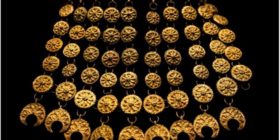LONDON: In a world’s first, a woman has successfully given birth to a baby from a transplanted womb.
The donated womb came from the woman’s own mother, making it the first baby in the world born to a woman using the same womb from which she was herself born.
The 36-year-old Swedish woman delivered a healthy baby boy weighing 1775g in September, 2014.
Scientists announced the breakthrough in the British medical journal The Lancet on Saturday. The unidentified woman, who has a genetic condition that means she was born without a womb, was one of nine Swedish women who received a uterus transplant from a live donor in 2013.
The transplanted womb was donated by her 61-year-old mother who had gone through the menopause seven years before the surgery.
The recipient, who had intact ovaries, was able to produce eggs that were fertilised using IVF prior to the transplant, and 11 embryos were cryopreserved (frozen). One year after her womb transplant, researchers led by Mats
Brannstrom, professor of obstetrics and gynaecology at the University of Gothenburg transferred a single embryo to the new womb, which resulted in a positive pregnancy test 3 weeks later. Fetal growth and blood flows through the uterine arteries and umbilical cord were normal throughout the first 31 weeks of pregnancy.
A British gynecologist from Queen Charlotte’s& Chelsea Hospital Dr J Richard Smith is also leading efforts in the UK to start a womb transplant programme.
He has founded a charity called Womb Transplant UK with the aim of raising £500,000 to perform the first five operations.
According to him, all the wombs will come from multi-organ donors, and the women will have to wait at least a year to ensure their bodies do not reject the new organ before undergoing IVF to have their eggs implanted. One in every 5000 women in the UK is born without a womb. In 2007 alone there were 2,200 women aged between 15 and 44 who were born without a womb.
In the 15 to 24 year old age group in the UK, around a thousand young women have hysterectomies every year which is a commonly performed procedure for the treatment of cervical cancer – many of these cancer victims have not completed their families when they have their wombs taken away.
“We found only one episode of mild rejection during the pregnancy that was successfully treated with corticosteroids, and the woman was working full time until the day before delivery”, says Professor Brannstrom about the latest breakthrough.
At 31 weeks, the woman was admitted to hospital with preeclampsia and 16 hours later a caesarean section was performed due to an abnormal fetal heart rate (on cardiotocography). A healthy boy was delivered with a normal birthweight for gestational age and with Apgar scores of 9, 9, and 10 (Apgar is a system for determining a newborn’s health at 1, 5 and 10 minutes after birth, using a scale of zero to 10, with 9-10 being fully normal).
The mother was discharged from hospital after 3 days, and the baby was discharged from the neonatal unit in good health 10 days after delivery. Both continue to do well.
Professor Brannstrom said “Our success is based on more than 10 years of intensive animal research and surgical training by our team and opens up the possibility of treating many young females worldwide that suffer from uterine infertility. What is more, we have demonstrated the feasibility of live-donor uterus transplantation, even from a postmenopausal donor”.
For women without a womb, the only two options which are available are adoption and surrogacy, both acceptable options but fraught with moral, ethical and financial difficulties.






Leave a reply